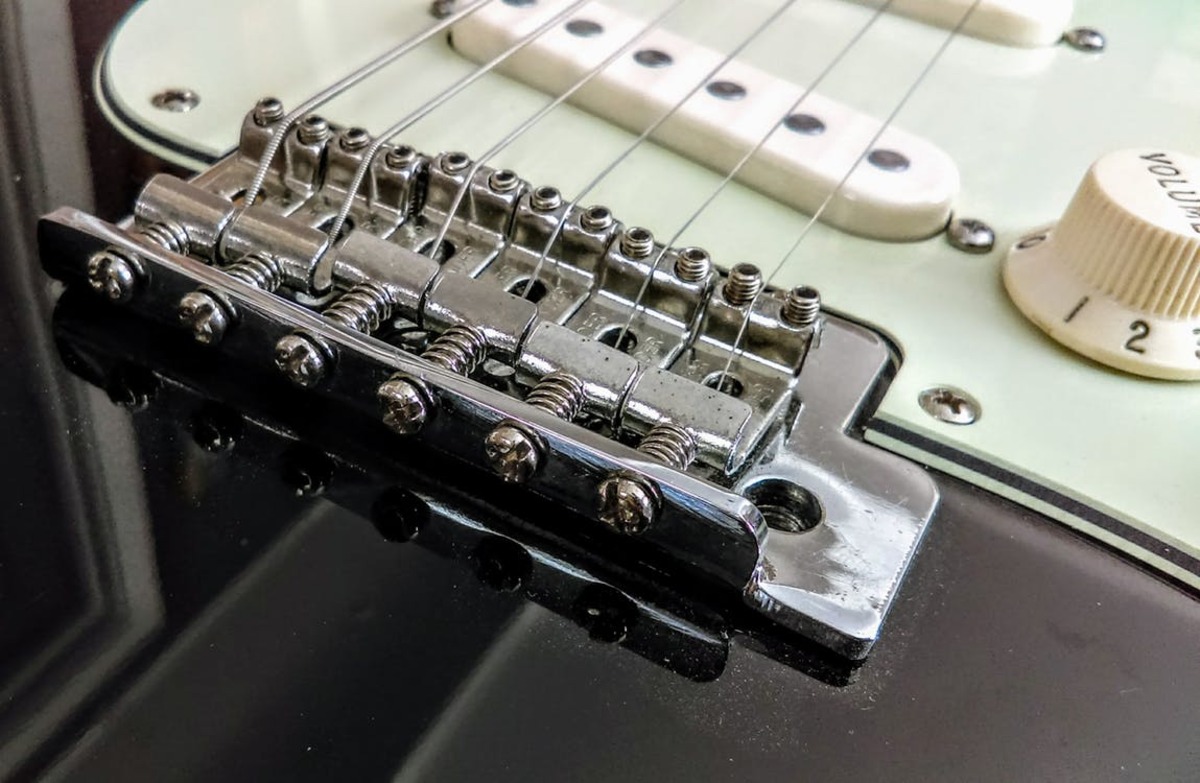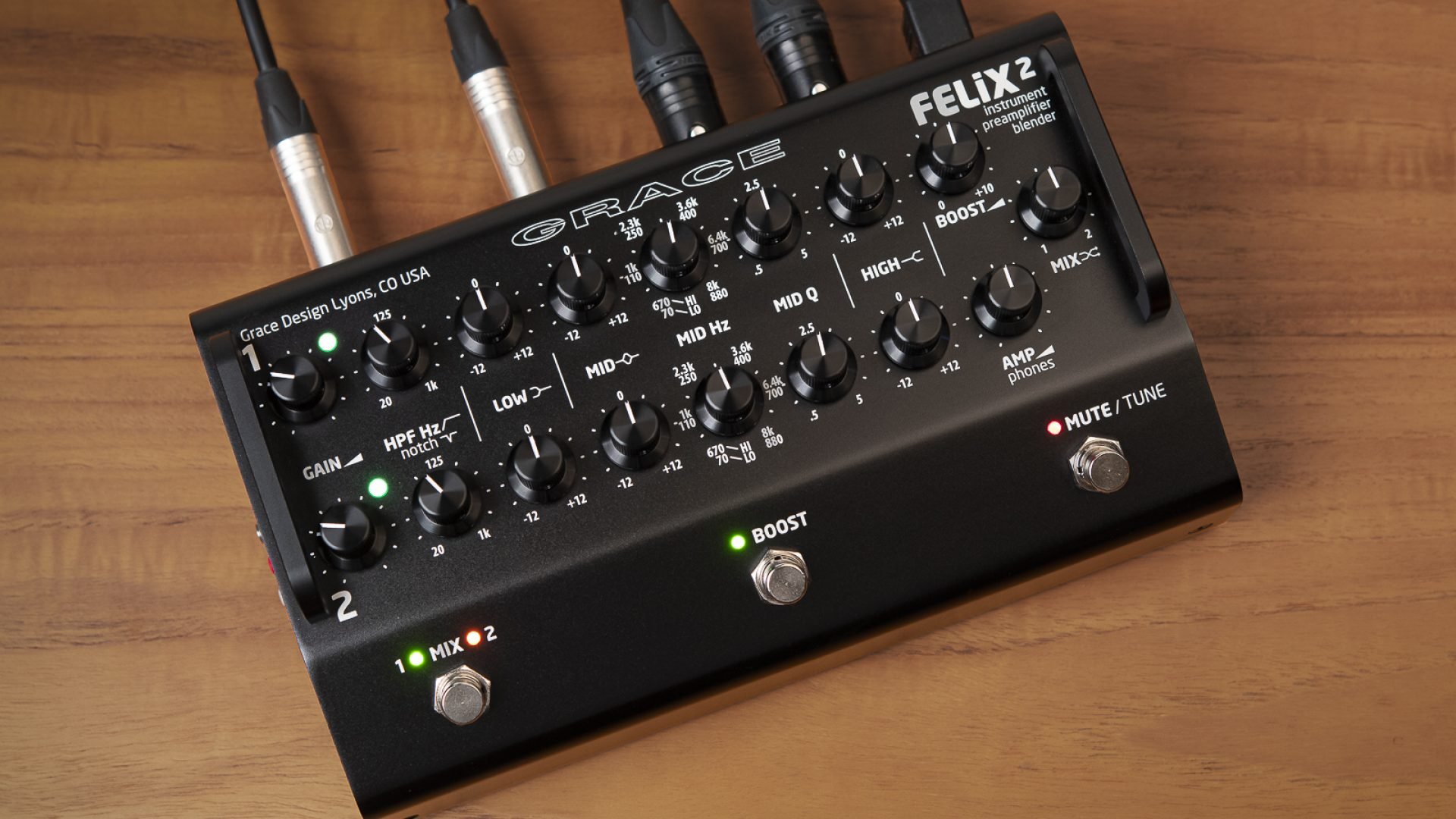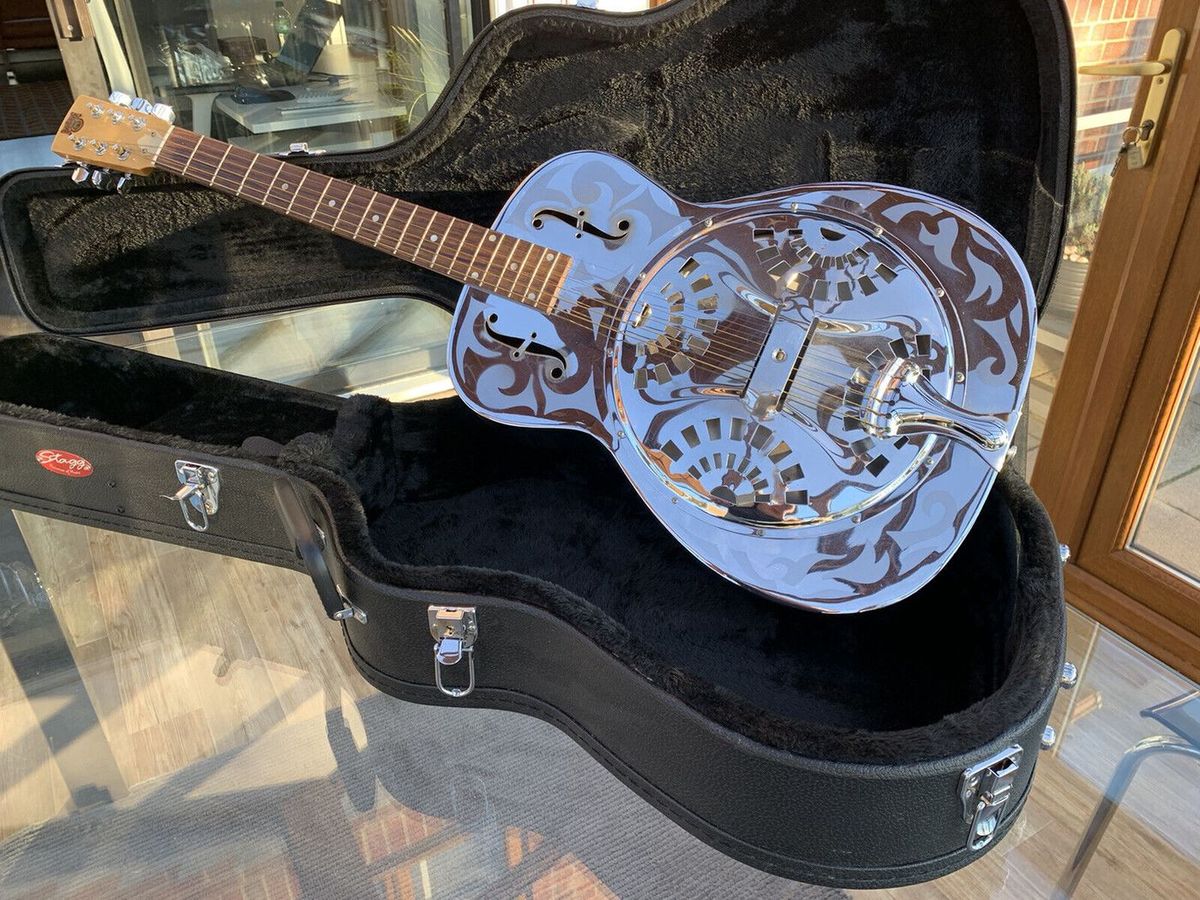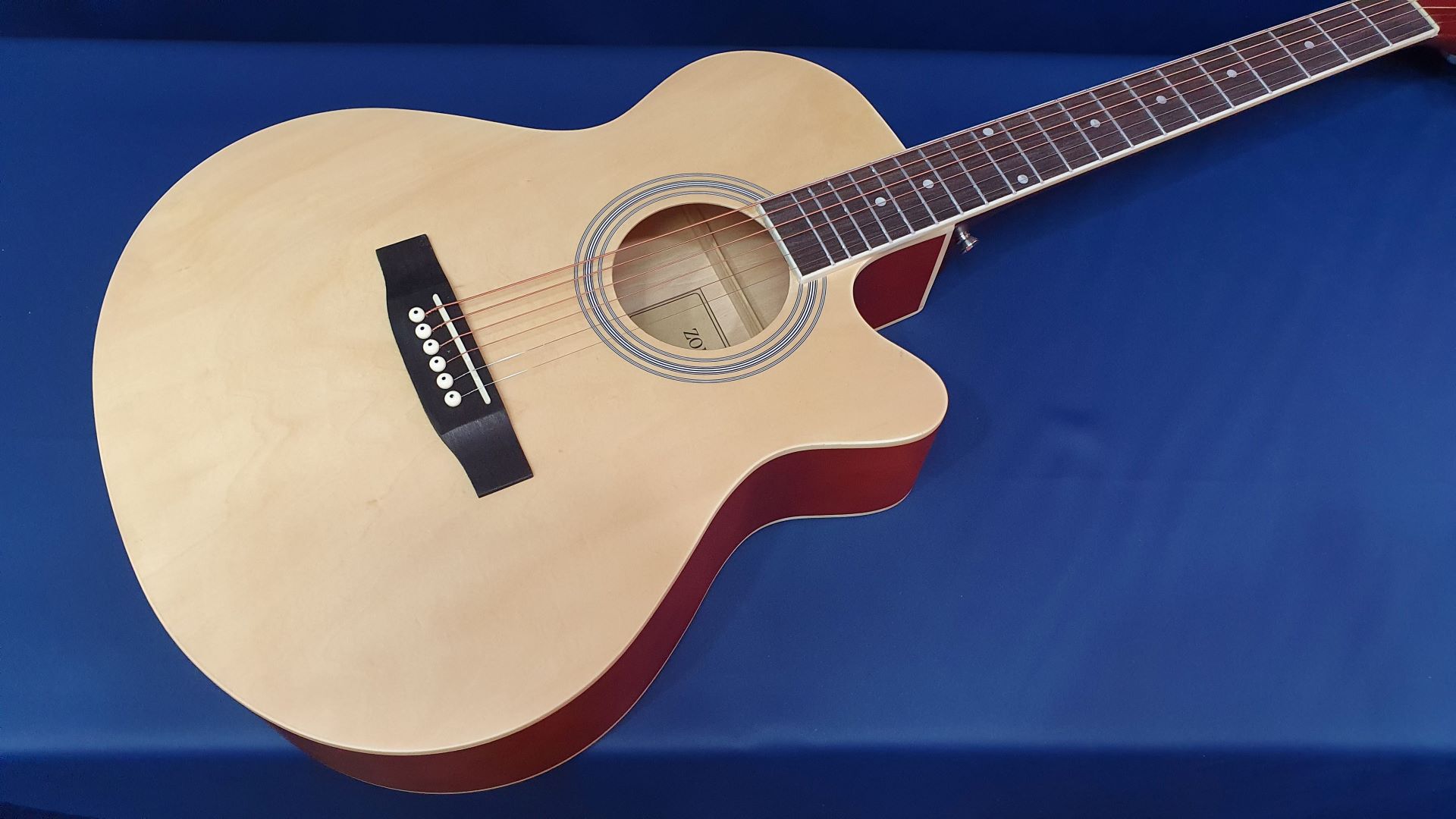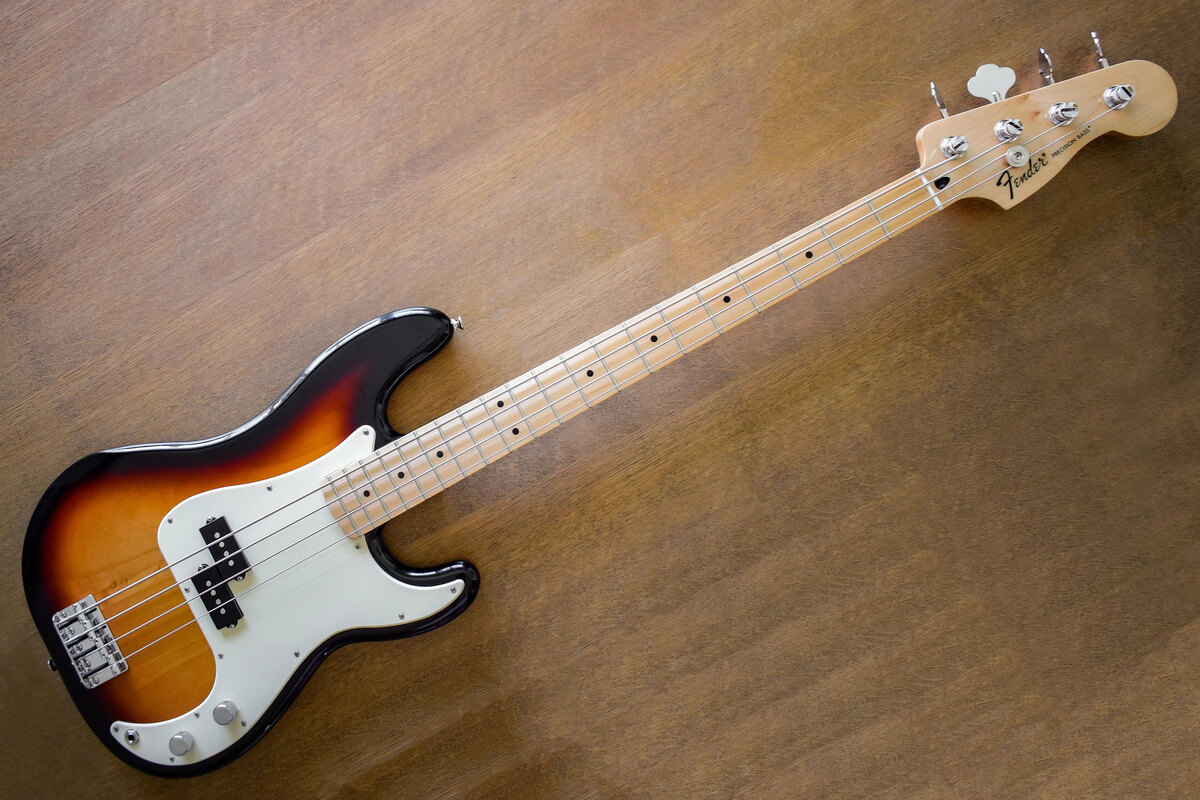Home>Instruments>Guitar>What Is A Guitar


Guitar
What Is A Guitar
Modified: February 16, 2024
Discover the essence of a guitar, its history, types, and how to play. Uncover the beauty of this timeless instrument and its significance in music.
(Many of the links in this article redirect to a specific reviewed product. Your purchase of these products through affiliate links helps to generate commission for AudioLover.com, at no extra cost. Learn more)
Table of Contents
Introduction
When it comes to musical instruments, few can rival the timeless appeal and versatility of the guitar. Whether it’s the gentle strumming of an acoustic guitar by a campfire or the electrifying solos of a rock concert, the guitar holds a special place in the world of music. With its ability to evoke a wide range of emotions and its prominent role in various music genres, the guitar has become an iconic symbol of musical expression and creativity.
For centuries, the guitar has captured the hearts and minds of musicians and music enthusiasts alike. Its allure lies not only in its melodic capabilities but also in its accessibility. From beginners learning their first chords to virtuosos mastering complex compositions, the guitar offers something for everyone.
Join us on a journey to explore the rich history, intricate anatomy, diverse types, and the art of playing this beloved instrument. Whether you’re a seasoned guitarist or someone intrigued by the instrument’s mystique, this comprehensive guide will provide valuable insights into the world of guitars.
History of the Guitar
The history of the guitar is a tale that spans millennia, with its origins rooted in ancient civilizations. The earliest known ancestor of the guitar can be traced back to the ancient world, with instruments like the lute and oud laying the foundation for the modern guitar. These early stringed instruments were prevalent in cultures across Mesopotamia, Egypt, and Persia, showcasing the universal appeal of plucked strings as a means of musical expression.
Fast forward to the Renaissance and Baroque eras, and we witness the evolution of the guitar in Europe. During this time, the guitar underwent significant transformations, including changes in its shape, string count, and playing techniques. The emergence of iconic guitar designs, such as the classical and flamenco guitars, further solidified the instrument’s place in musical history.
However, it was not until the 20th century that the guitar truly soared to the forefront of popular music. With the birth of jazz, blues, and rock ‘n’ roll, the guitar became synonymous with rebellion, passion, and innovation. Pioneering musicians like Robert Johnson, Django Reinhardt, and Jimi Hendrix pushed the boundaries of guitar playing, captivating audiences and inspiring generations to come.
Today, the guitar continues to evolve, with modern advancements in technology and playing styles shaping its trajectory. From acoustic ballads to high-octane riffs, the guitar remains a symbol of creativity and self-expression, carrying forward a legacy that spans centuries.
Anatomy of a Guitar
Understanding the anatomy of a guitar is essential for both aspiring musicians and seasoned players. From the headstock to the bridge, each component plays a crucial role in shaping the instrument’s sound and playability.
Headstock: The headstock, located at the top of the guitar, houses the tuning pegs, which are used to adjust the tension of the strings. It also serves as a platform for the placement of the nut, a small piece that guides the strings to the fretboard.
Neck: The neck of the guitar extends from the body and is where the fretboard and frets are located. It provides a pathway for the player’s fingers to press down on the strings, altering the pitch of the notes.
Fretboard: The fretboard is a flat, often wooden, surface on the neck of the guitar. It is divided into frets, which are metal strips embedded along the length of the fretboard. Pressing the strings against the frets produces different pitches, allowing for the creation of melodies and chords.
Body: The body of the guitar is a hollow or solid chamber that amplifies the vibrations of the strings, producing the instrument’s sound. It typically consists of a sound hole (in acoustic guitars) or pickups (in electric guitars) to capture and project the vibrations.
Bridge: The bridge is located on the body of the guitar and anchors the strings in place. It plays a critical role in transmitting the string vibrations to the body, influencing the overall tone and sustain of the instrument.
These fundamental components, along with the strings, pickups (in electric guitars), and various controls, come together to form the intricate anatomy of a guitar, shaping its sonic capabilities and playability.
Types of Guitars
The world of guitars encompasses a diverse array of instruments, each with its unique characteristics and sonic qualities. From classical elegance to modern innovation, exploring the various types of guitars unveils a rich tapestry of musical expression.
Acoustic Guitar: Renowned for its warm and resonant sound, the acoustic guitar is a staple in genres ranging from folk and country to pop and rock. Its hollow body and sound hole allow for natural amplification, making it a popular choice for intimate performances and songwriting sessions.
Electric Guitar: The electric guitar revolutionized the music industry with its ability to produce amplified sounds and a wide range of tonal effects. From blues to heavy metal, the electric guitar’s versatility and expressive capabilities have cemented its status as an icon of modern music.
Classical Guitar: Characterized by its nylon strings and melodic intricacy, the classical guitar is synonymous with the works of composers like Fernando Sor and Francisco Tárrega. Its gentle, nuanced sound and fingerstyle playing technique make it a beloved instrument in the world of classical music.
Archtop Guitar: With its distinctive arched top and f-shaped sound holes, the archtop guitar is a hallmark of jazz and swing music. Known for its rich, mellow tones and elegant aesthetics, it has been favored by legendary jazz guitarists throughout history.
Resonator Guitar: The resonator guitar, featuring a metal resonator cone that enhances its volume and projection, delivers a distinctively bluesy and twangy sound. Its unique construction and metallic timbre make it a captivating choice for blues, bluegrass, and slide guitar enthusiasts.
These are just a few examples of the diverse range of guitars that exist, each offering a distinct sonic palette and playing experience. Whether strummed acoustically or unleashed through a wall of amplifiers, guitars continue to captivate musicians and audiences across the globe.
How to Play the Guitar
Learning to play the guitar is a rewarding journey that opens up a world of musical possibilities. Whether you’re drawn to acoustic serenades or blistering electric solos, mastering the fundamentals is essential for unleashing your creativity and musical expression.
1. Get Acquainted with the Instrument: Familiarize yourself with the parts of the guitar, including the body, neck, fretboard, and strings. Understanding the instrument’s anatomy lays the groundwork for developing proper playing techniques.
2. Learn Basic Chords: Begin by mastering fundamental chords such as G, C, D, E, and A. These open chords form the basis of countless songs and provide a solid foundation for chord transitions and strumming patterns.
3. Practice Proper Posture and Hand Placement: Maintain a relaxed yet upright posture while sitting or standing with the guitar. Position your fretting hand so that your fingers can press down on the strings without excessive strain, and ensure that your picking hand moves fluidly across the strings.
4. Develop Finger Dexterity: Practice exercises to strengthen your fingers and improve dexterity. This includes fingerpicking patterns, scale sequences, and chord transitions to build agility and coordination.
5. Explore Playing Styles: Experiment with various playing styles, such as fingerstyle, flatpicking, and palm muting, to discover the techniques that resonate with your musical preferences. Each style offers a unique approach to producing different tones and textures.
6. Utilize Learning Resources: Take advantage of online tutorials, instructional books, and video lessons to expand your knowledge and refine your skills. Learning from experienced instructors and observing performances by accomplished guitarists can provide valuable insights and inspiration.
7. Embrace Patience and Persistence: Mastery of the guitar is a gradual process that requires dedication and perseverance. Embrace the journey, celebrate small victories, and maintain a positive attitude as you navigate the learning curve.
By immersing yourself in the art of playing the guitar and embracing a spirit of continuous learning, you’ll unlock the potential to express your musical voice and connect with others through the universal language of music.
Famous Guitarists
The world of music has been shaped and transformed by the extraordinary talents of legendary guitarists whose contributions have left an indelible mark on the fabric of popular culture. From groundbreaking innovations to soul-stirring performances, these iconic figures have inspired generations of musicians and audiences alike.
1. Jimi Hendrix: Revered for his revolutionary approach to the electric guitar, Jimi Hendrix redefined the possibilities of the instrument with his virtuosic playing and trailblazing use of effects. His iconic performances at Woodstock and Monterey Pop Festival solidified his status as a guitar deity.
2. Eric Clapton: Known for his emotive blues phrasing and timeless hits, Eric Clapton’s influence spans decades, from his tenure with the Yardbirds and Cream to his illustrious solo career. His soulful playing and melodic sensibilities have earned him a place among the most revered guitarists in history.
3. Jimmy Page: As the visionary force behind Led Zeppelin, Jimmy Page’s innovative guitar work and songwriting prowess have left an indelible imprint on rock music. His use of bowing techniques and intricate riffs has solidified his legacy as a pioneering guitar virtuoso.
4. B.B. King: Renowned as the “King of the Blues,” B.B. King’s expressive vibrato and heartfelt phrasing defined the blues genre. His soulful playing and profound influence on generations of blues and rock guitarists have secured his place as a luminary of the instrument.
5. Andrés Segovia: Widely regarded as the father of the modern classical guitar movement, Andrés Segovia’s technical mastery and advocacy for the classical repertoire elevated the guitar to the concert stage. His artistry and dedication to expanding the guitar’s classical repertoire have shaped the instrument’s evolution.
These remarkable guitarists, among many others, have not only redefined the boundaries of guitar playing but have also inspired countless individuals to pick up the instrument and embark on their musical odyssey. Their enduring legacies continue to resonate across genres and generations, ensuring that the guitar remains an enduring symbol of artistic expression and innovation.

